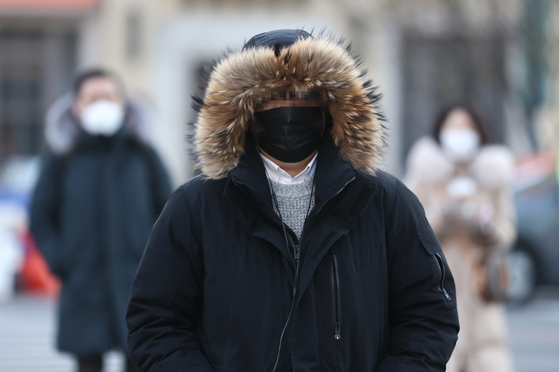
A strong cold wave comes from the 29th to the beginning of January of the following year. This cold wave is expected to continue until mid-January. yunhap news
A strong’worldly cold wave’ is coming from next week. This cold is expected to continue until mid-January.
As the effects of cold high pressures occurring in the continent become somewhat stronger next week, a cold wave is expected to drop from the 29th to January 2nd of the following year, with the morning temperature dropping around -17 to 2 degrees below zero. The Meteorological Administration said on the 23rd, “From the 30th, it is expected that the cold weather will continue until mid-January.”

On the morning of the 17th, when the cold weather warning went into effect, cattle breeding in a Korean cattle farm in Daejeon are breathing in the cold. Freelancer Seongtae Kim
December was a bit colder than normal and colder than expected last month. The Meteorological Administration explained, “The average temperature until December 21 was 0.6 degrees, which was 1.5 degrees lower than normal (2.1 degrees),” and “from the afternoon of the 13th, the cold continental high pressure expanded significantly, and the strong northwest wind was affected.”
The actual weather in December was colder than last month’s winter weather forecast predicted by various models around the world that’December will be somewhat colder than normal, and January-February will be similar or higher than normal’. According to the results of various model predictions around the world, the temperature in January is expected to be slightly lower as the influence of cold continental high pressure continues.

December (until the 21st) temperature distribution (left) and normal year temperature distribution (right). The temperature in December, which was similar to that of the normal year, fell sharply after the 13th in South Korea, and continued for about a week, lowering the national average temperature. The average temperature between 1 and 21 days in most regions of the country was lower than normal, making it a’cold December’. Materials Meteorological Agency
Strong cold until early January, sometimes heavy snow on the west coast

On the 20th, a waterfall in Jungmyeong Ecological Park, Yeonil-eup, Nam-gu, Pohang-si, Gyeongsangbuk-do, was frozen in cold waves. The cold wave at the end of the year is expected to continue stronger than the cold wave on the 13th-21st. News 1
The weather in January, which was expected to be’similar to the normal year’ seems to be’similar to or lower than the normal year’. The Meteorological Administration announced on the 23rd in the ‘3-month weather forecast’, “The sea ice area in the Arctic is less than the normal year, so recently, the tendency of polar air to descend to East Asia has increased.” , Sometimes, when cold air comes down, a strong cold wave is expected.”

Making a snowman at Yongwangsan Park in Mok-dong, Seoul on the 13th when snow fell in the central region. Reporter Byun Seon-gu
After mid-January, the average temperature distribution has been restored. As it is periodically affected by cold and warm air, the range of temperature change is expected to be large. There is a possibility that a lot of snow falls around the west coast and Jeju Island as cold air passes through the west sea and creates a snow cloud. However, the weather is generally sunny and dry throughout January, and the monthly average precipitation is expected to be at a level similar to or less than that of the normal year.
The Meteorological Administration explained, “As the airflow around the stratosphere changes, it is affecting the movement of the air in the polar regions,” and said, “We are monitoring in real time because the temperature outlook may change due to sudden barometer fluctuations.”
February and March are normal or warmer

A snowman made in a park in Sinnae-dong, Jungnang-gu, Seoul on the 13th when snow fell in the central region. It is expected that there will be a lot of snow in the west coast and Jeju Island in January next year, and Gangwon-do in February and March. News 1
From February, the temperature of the cold air weakens and the temperature rises. Sometimes the temperature drops temporarily, and the temperature at night is still low, so the difference between day and night temperature increases, but a similar level of temperature distribution is expected. A lot of snow is expected around Gangwon-do due to the warm and humid wind blowing from the south and the sometimes blowing east wind.
March gets warmer than usual. The Meteorological Administration predicted that “there will be a’shiny cold’ sometimes when cold air comes down from the upper floors.” Precipitation is expected to be similar to the average year.
The Meteorological Administration said, “Overall there is a trend of temperature increase, but the trend of temperature increase in March is very clear, and the temperature fluctuations in January and February are large.” City will be announced,” he added.
Reporter Kim Jeongyeon [email protected]
